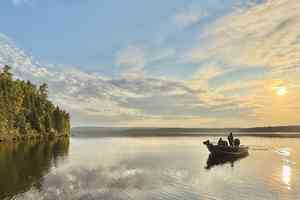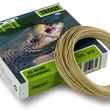Most anglers would prefer to imagine the company that builds the fly rods they buy as one run by fishing nerds, where days are spent talking technique, trading fish tales and theorizing about how to improve the tools they build for fishermen instead of analyzing market surveys and strategizing how to improve their bottom line. Sure, we all know that these companies are in the business of fishing, but we like to imagine that fishing comes first and business second, even when we know this most likely isn't so.

At this year's IFTD show in Orlando, Orvis introduced a new addition to its Helios 2 rod lineup, the Orvis Helios 2 one piece. As I sat and discussed the rod with Orvis' Tom Rosenbauer, it was clear that Tom and the other folks at Orvis were excited about the new addition, and seemingly with good reason. According to Tom, after many months of testing in the Florida Keys with some of the best flats guides in the US, Orvis had heard overwhelmingly positive feedback on the one piece version of the award-winning Helios 2.
We talked about the benefits of the one piece build: the subtle improvements in energy transfer that translate into higher line speeds and easier casting, the weight savings, the no-ferrule design, improved strength and so on. We talked about how Orvis had to modify their rod breaking machine in order to get it to snap the new one-piece model. Then we talked some more about the praise they were getting from some of the rods' testers.
But, despite the rosy feedback, I found myself wondering whether Orvis was going to sell many of these things. After all, 4-piece rods long ago became the standard and will remain so for the foreseeable future. This is not without good reason. 4-piece rods are dramatically more convenient for transport, especially when traveling via air, they are much easier to store and handle and the drawbacks of a 4-piece design, especially as rod makers have refined these designs over the last decade or so, are minor.
All of the aforementioned benefits of a one-piece build are unquestionably real, and while they'll excite a guide or an advanced flats angler, they are also benefits that may be lost on or go unnoticed by an average caster. And so as the market has shown, with the consumer, big leaps in convenience trump small refinements in performance. This is why one piece rods are notably hard to find these days. A few other manufacturers make them, but they've unquestionably become specialty pieces.
So as my curiosity about Orvis' business decision to put time and money into building the one-piece Helios 2 mounted, I decided it best just to pose the question to Tom. "Do you actually hope to move many of these?," I asked bluntly. Much to my surprise, Tom's response came quickly and matter-of-factly. "Nah, not really. We made it because we wanted to."
To be clear, Orvis doesn't expect the Helios 2 to be a loser, it just doesn't expect it to go flying off the shelves. There are no doubt plenty of anglers out there -- even if many of those anglers are boat owners, guides and folks that generally live in salty places -- that will find the Helios 2 to be irresistible. But Orvis knows it isn't a product with universal appeal. Still, given what Orvis had learned about the design of the Helios 2 over the last couple of years, they felt that a one piece model could offer up some notable improvements. So they made one.
The fact that they made it knowing it wasn't destined for the top of their sales charts, at least to my ears, was very refreshing to hear. As I noted, we all want to imagine that building the best fly rod -- not building the best selling fly rod -- is what drives the companies that build the gear we buy. As far as Orvis' latest offering goes, that might just actually be the case.





























Comments